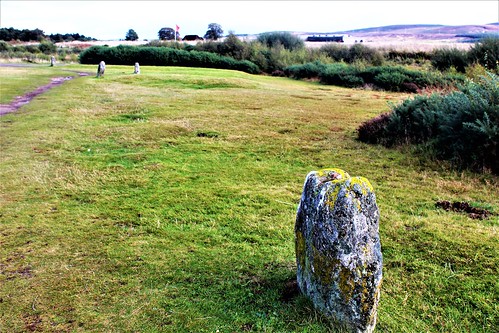Scotland's heritage sites attract big uplift in visitor numbers
Scotland's official tourism body,VisitScotland has reported a near doubling of persons visiting key historic attractions over the past twenty years with actual numbers rising from 2.2M to 3.9M.
Top attractions include the following:
- Stirling Castle
Stirling is a large town in central Scotland ( pop 41,000 ) about 38 miles N.W. of Edinburgh.
In course of the last 1000 years the castle has played a critical role in Scotland’s history. Strategic location has witnessed two major battles in medieval times, whilst during the renaissance period the castle housed a Royal Palace and was, effectively, the capital of Scotland for certain periods.
Landscape view of Stirling Castle
- Culloden Battlefield
Stone marker indicating a burial place of four clans.
- Castle Urquhart, Loch Ness
Castle Urquhart is located in the Scottish Highlands near Inverness on the western bank of Loch Ness.
This site attracts high volumes of tourist visitors as it provides an excellent platform for viewing Loch Ness and its elusive monster.This is a quality site with much to offer including a short, introductory film, refreshment facilities, gift shop and stunning views over the Loch.
There has been a fortification on the site for about 1500 years, dating back to Pictish times. Like the vast majority of surviving stone castles in the British Isles, Urquhart has its genesis in the 13th century. Initially under control of Alan Durward the castle was extended by the powerful Comyns after 1275. Subsequent milestones:
- Oscillated between English and Scottish control during the 14th century Wars of Independence.
- Post 1390, the threat came from the MacDonalds, Lords of the Isles in the West of Scotland.
- Captured by the MacDonalds in 1452 but regained by the Scottish Crown four years later.
- Plundered by MacDonald clansmen in 1544-5
- Partly blown up by defenders at time of Jacobite uprising in 1689 to prevent opponents gaining advantage.
- Subsequently a deteriorating and romantic ruin.
- Ditch and drawbridge.
- Gatehouse
- Guard Room
- Constable’s Lodging
- Water Gate
- Outer Close
- Chapel
- Great Hall
- Inner Close
- Grant Tower, as shown below. This is the most prominent feature and named after the Grant family who held the castle in the early 16th century.
- Greyfriars Kirkyard (church yard), Edinburgh
The origins of the church date to 1562 when Mary, Queen of Scots granted land for burials. Subsequent events summarised as follows:
- Construction of the church had commenced by 1602 using stone recycled from the former convent nearby.
- Church opened in 1620.
- In 1638 Scotland’s National Covenant, a very important document, was presented and signed in front of the pulpit. This concerned the governance of the (national) Church in Scotland.
- Used as a barracks by Cromwell’s forces during period 1650-1653.
- Various structural changes and embellishments were effected.
- The tower, used a gunpowder store, was accidentally blown up in 1718.
- A new church was added on the building’s western side in the 18th century resulting in two discrete congregations.
- The kirkyard was used to hold 1200 Covenanter prisoners in 1675 pending trail.
- Extensive fire damage in 1845.
- In the mid-19th century two radical innovations were introduced namely, musical accompaniment to singing and stained glass.
- The ‘Greyfriars Bobby‘ story gained momentum after 1872.
- In 1929 the hitherto separate congregations merged and dividing wall removed.
- In 1979 the Greyfriars congregation merged with the nearby Highland Tolbooth St John’s subsequent to which services in Gaelic have been held on Sundays.
- Edinburgh Castle
Edinburgh Castle sits atop a natural fortification in form of an ancient volcanic plug the elevation of which offers superb views over Edinburgh, Firth of Forth and other aspects of the local landscape. The castle changed hands many times during the Anglo-Scottish Wars of medieval times. Most of the castle buildings today date from the 16th and 17th centuries. The castle is particularly noted for:
- It’s role as a venue for the annual Royal Edinburgh Military Tattoo during August.
- The One o’Clock Gun.
- A place of safekeeping for the Honours of Scotland (Crown Jewels).
- As a repository for the Stone of Scone (Stone of Destiny).









Comments
Post a Comment